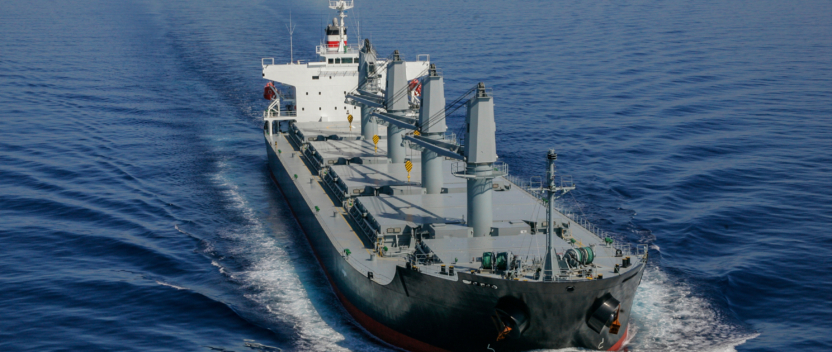Futurenautics – Shipping’s Technology-Enabled Future

We are pleased to be part of Futurenautics, (www.futurenautics.com) a new information resource specifically designed to identify relevant technology trends—and importantly—contextualise them for the shipping and maritime industry.
Across a range of digital, print and live platforms, Futurenautics provides comprehensible, digestible, and often controversial insights into the technology trends, research, development, innovation and deployment in shipping and other sectors. Futurenautics want to encourage shipping and maritime leaders to ask questions of themselves and their organisations that will begin equipping them for shipping’s technology-enabled future. The following is a taster of articles you will find in their online magazine.
‘Older sailors warn that sailors no longer know how to sail and are losing their connection with the sea, whilst younger recruits lack the reverence of previous generations for the collective experience of the older sailor’. You could be forgiven for assuming that this is a reflection upon the current state of the shipping and maritime industry. In fact these are the words (slightly paraphrased) of a British historian, talking about events 180 years ago when shipping underwent its first major revolution: the advent of the age of steam.
Prior to the SS Great Western’s record-breaking 15 day voyage across the Atlantic in 1838 it had taken a merchant ship on average five weeks to make the crossing. The effect on trade was electric, but the effect on the shipping industry and its people was profound. Prior to steam a ship’s crew were generalists, able to turn their hands to any task on board. But with steam came a new breed of seafarer – marine engineers, stokers and other roles necessary to keep the ship running with their new, dangerous and unpredictable engines.
Despite transporting 90% of everything, shipping hasn’t really undergone a major industrial change since then. The new skills required by nineteenth century crews and management are still broadly speaking the ones which we train for today. However, shipping is now entering a period which will be as disruptive and transformative as the advent of steam, driven by technology and the digital age.
On July 1st 2012 this new era really began. The introduction of the IMO’s ECDIS mandate marked the first concrete implementation of its e-navigation agenda. Although nominally a navigation issue, the actual scope of the e-navigation agenda in practice is much wider. It is designed to bring about increased safety and security in commercial shipping through better organisation of data on ships and on shore, and better data exchange and communication between the two. And that goes far deeper than a simple IT change. Taken together with the glass bridge and high-throughput satellite communications systems IMO’s mandate supports a wider convergence of maritime technologies.
The transition to new, digital and technological-based standards of operation and monitoring within the maritime space is termed ‘e-nautics’. Driven by regulation, commercial necessity and global change, together with IMO’s agenda, it includes the increasing use of voyage optimisation and routing software to reduce fuel costs, the rising implementation of applications designed to streamline operations and integrate better with customer requirements and systems, and the response to future mandateswhich can increasingly only be met by the intelligent deployment of technology solutions.
To date regulation has been the prime driver of innovation within shipping, but both external and internal market pressures are conspiring to make that status quo untenable. Increasing technology convergence and IT enabled trends mean that in order to be successful those at the helm of shipping and maritime companies need to be looking across their businesses at the impacts, threats and opportunities from a technology paradigm. The importance of—and the profits to be made from—transitioning technology from a cost-centre to an enabler of intelligence and innovation at the heart of the business cannot be overestimated.
At Futurenautics we break down the key forces at work into seven spheres of influence, and try to contextualise them for shipping and maritime—from the Sentient Ship, to Shipistics, shipping’s big data challenge, through Cyborg Crew and Business e-volution. We are charting the impact of technology from high-throughput satellites,nanotechnology, smart materials and advances in M2M, computing power, algorithms, automation and robotics on new multi-sided, collaborative business models based on cloud technologies and reflecting the new Millennial generation philosophies.
There are those—probably the majority—in shipping and maritime who will struggle with that list, but lack of knowledge isn’t the key issue. Knowledge can be acquired, it is the strategic mind-set which determines a leader to acquire it that matters. For an industry where according to Drewry box ship on-time reliability dropped 1.4%, declining to 69.5% in the third quarter of 2013, and where new, disruptive start-ups are already challenging opaque business practices and entrenched attitudes, the need to adopt the technology mindset is pressing. Over the coming months on this blog we’ll take a more in-depth look at some of these forces including cloud technologies, apps and the impact of Manufacturing 3.0, and the threats and opportunities they hold for shipping.
Sitting at the heart of so many complex value and logistics chains, and with advances in 3D printing in some cases threatening to undermine entire business models, shipping is extremely vulnerable. “The current generation of shipping tycoons absolutely has its merits, but the world has changed and so has the technology,” says Orange’s Filip Vanheer. “The new generation that is taking over control of these companies is much more open towards technology changes than the current ones. But above all, their customers expect new services; they don’t want to lose track of their goods for weeks.”
Like those customers 180 years ago who suddenly weren’t prepared to wait five weeks for a transatlantic shipment, the pace of digitisation and technology adoption is already leading today’s shipping customers to expect more. Those who realise technology is the way to deliver against and exceed those expectations have a once in a generation opportunity to transform an industry.


